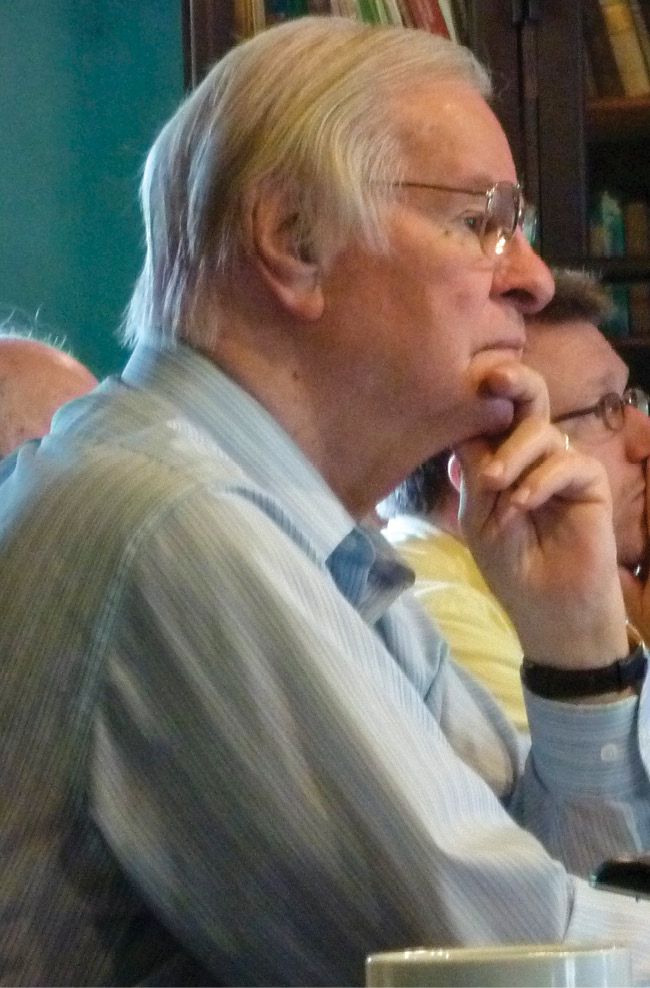Roger H. Stuewer
DOI: 10.1063/PT.3.5242
Roger H. Stuewer, a giant in the history of physics and an emeritus professor of history of science at the University of Minnesota, died on 29 July 2022 in his home in New Brighton, Minnesota.

Roger H. Stuewer
JOHN D. NORTON

Roger was born on 12 September 1934 in Bonduel, Wisconsin. In 1952 he began his undergraduate studies at the University of Wisconsin–Madison. After a stint in the US Army, stationed mostly in Munich, he resumed his undergraduate work in 1956, eventually majoring in physics education.
After teaching high school for a year, Roger used the one year of academic education he had left under the GI Bill to study physics in Vienna in 1959. A few months after he married Helga von Schmeidel in April 1960, they moved to Tiffin, Ohio, where Roger had been hired as a physics instructor at Heidelberg College. In 1962 they and their two children moved to Madison so that Roger could pursue graduate studies at the University of Wisconsin. He earned his PhD in 1968 with a double major in history of science, with Erwin Hiebert, and physics, with Heinz Barschall. His dissertation would form the basis for his first book, The Compton Effect: Turning Point in Physics (1975), which became a classic in the field.
To show how the job market had changed since he first started applying, Roger loved telling how even before he had his PhD in hand, he received 35 offers! He accepted a position as a historian of science at the University of Minnesota, with a joint appointment in the center for philosophy of science and the school of physics and astronomy. That planted the seed for what in 1972 would become the program in history of science and technology, with historians embedded in science and engineering departments. Roger served as its director until 1989. He became emeritus professor in 2000. One of us (Shapiro) succeeded him as the program’s director, and the other (Janssen) as its historian of modern physics. The original program lasted until 2007, when it merged with the program in history of medicine.
In 1977 Roger organized a symposium in Minnesota on nuclear physics in the 1930s that attracted many of the pioneers from that time. He edited its proceedings, Nuclear Physics in Retrospect, which came out in 1979. It was the first of many publications that established Roger as the world’s leading authority on the early history of nuclear physics. He synthesized much of that work for a broader audience in his last book, The Age of Innocence: Nuclear Physics Between the First and Second World Wars (2018).
As a historian of modern physics, Roger was ahead of the curve in several respects. First, long before it became the norm, he made extensive use of archival sources. Second, at a time when the field was dominated by the history of theory, he focused on experiment. Third, he paid close attention to institutional settings.
Roger was a great ambassador for the history of physics. He was a much sought after speaker at both physics and history of science conferences. He lectured to captivated audiences as a visiting professor in Vienna in 1989 and in Amsterdam in 1998. Wherever he went, he made many lifelong friends in both the physics and the history and philosophy of science communities.
Throughout his career, Roger took on leadership roles in organizations focusing on history of physics and physics teaching. He served two terms, for instance, as chair of the executive committee of the American Physical Society Forum on History of Physics, and he was a member of the Advisory Committee on History of Physics of the American Institute of Physics (publisher of Physics Today) for 15 years. From 1978 to 2015, he was the resource-letters editor of the American Journal of Physics. During those 37 years, he published a record 183 resource letters. In 1999, together with John Rigden, he started a new journal, Physics in Perspective, which he edited until 2013. During his tenure, many of the articles’ acknowledgments mentioned his meticulous copyediting.
In 1997 Roger helped Lee Gohlike in founding the Seven Pines Symposium, which for 25 years has brought together scientists and historians and philosophers of science in a charming inn outside Stillwater, Minnesota, to discuss problems at the intersections of those fields.
Roger was also instrumental in establishing the American Physical Society’s Abraham Pais Prize for History of Physics in 2005. He was awarded the prize in 2013 for “his pioneering historical studies of the photon concept and nuclear physics, and for his leadership in bringing physicists into writing the history of physics by helping to organize and develop supporting institutions and publications.”
Of the many honors Roger received, the Pais Prize and the Distinguished Alumni Award from the University of Wisconsin–Madison’s department of physics meant the most to him. Both underscore Roger’s deep commitment to bridging the worlds of physics and history and philosophy of science.
More about the Authors
Michel Janssen. University of Minnesota Twin Cities, Minneapolis.
Alan E. Shapiro. University of Minnesota Twin Cities, Minneapolis.
